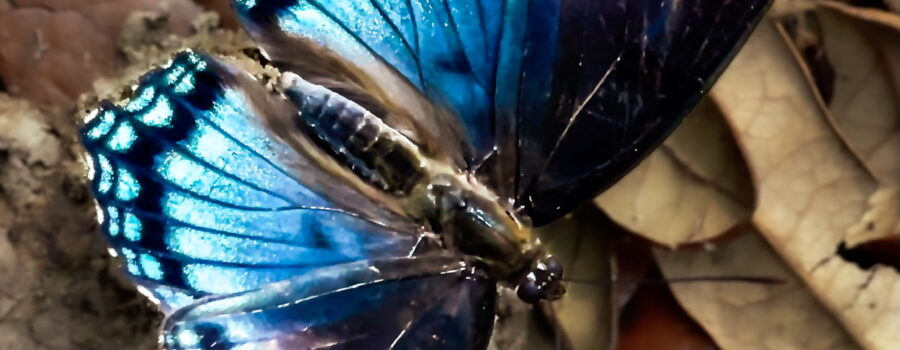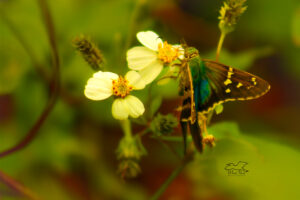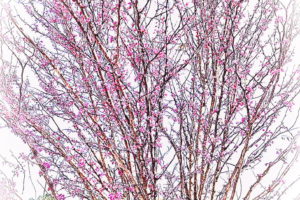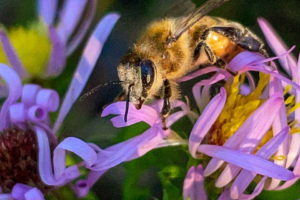The Beautiful Red Spotted Purple is a Copycat

One of the prettiest butterflies that we have around here, in my opinion, is the red spotted purple (Limenitis arthemis astyanax). I just love the bright, shiny blue color of the wings when they are open. I’ve been trying to get some good photos of them for quite awhile, but they tend to be very active butterflies and spend most of their time flying. They will occasionally eat flower nectar, but they much prefer to get nutrients from tree sap, rotting fruit, mud puddles, and dung. Even when they do land to feed, the wings flap almost continuously, so a fast shutter speed is needed to eliminate blur.

Last week while I was hiking the trails near my house, I came across this red spotted purple that was really intent on a pile of old dung. It was so interested that it actually stayed there feasting for quite awhile. I literally jumped on the opportunity to get some photos, and as you can see, it allowed me to get pretty close and to shoot from several different angles. All in all, I’d say I spent about 20 minutes taking pictures of this butterfly. It did fly off several times, but it would circle around and come right back. When I left, it was still feeding. Either it was very hungry or that was some really tasty poop!

There are a number of interesting things about the red spotted purple, but one of the coolest is that it is a subspecies of the white admiral (Limenitis arthemis arthemis) that is found in much of Canada and the northern United States. The red spotted purple lacks the thick white stripe that runs through both the fore and hind wings of the white admiral and it has developed the shiny blue hind wings as a way of mimicking the pipevine swallowtail (Battus philenor). The pipevine swallowtail caterpillar feeds on the highly toxic pipevine plant. By ingesting those toxins both the larvae and adults become toxic and foul tasting to most predators, especially birds. By resembling the pipevine swallowtail (which doesn’t occur in the range of white admiral), the red spotted purple also avoids those predators.

In Florida the red spotted purple usually has two generations. We are currently working on the first generation, but soon the adults will be breeding and laying eggs, usually on the tips of the leaves of trees that the caterpillars feed on. Down here, those are usually black cherry trees or other members of the Rosaceae family. With their dependence on trees, it’s not surprising that these pretty butterflies are usually found in areas with plenty of deciduous forest. They like sunshine, so they’re often found in clearings or along forest edges as well as in parks and along roadsides. The one in the photos was along the trail, but definitely in a fairly clear and sunny area.






Recent Comments